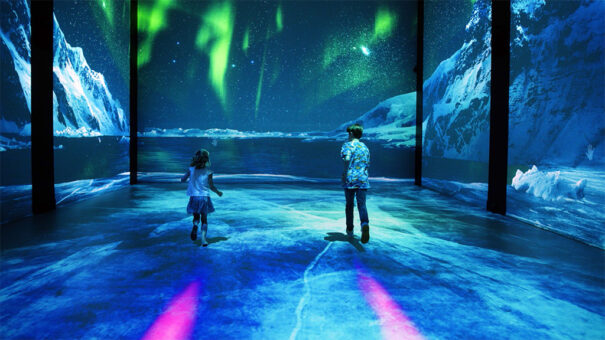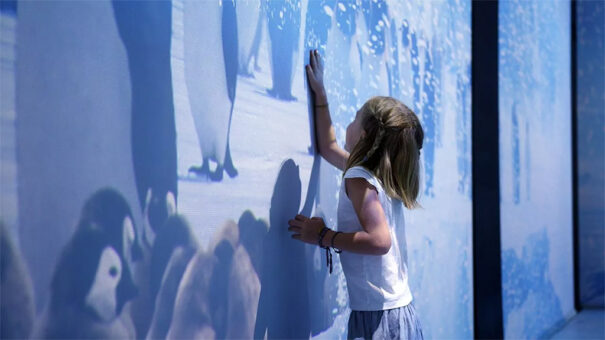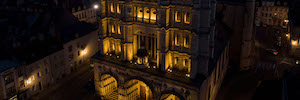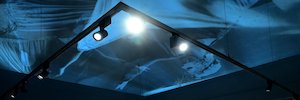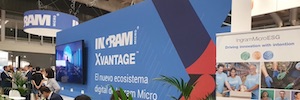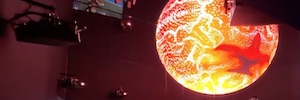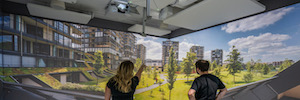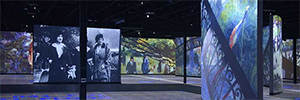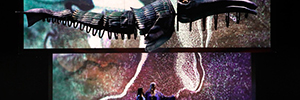Modulo Pi ayuda a crear el inmersivo entorno en The Polar Mission de Mónaco
Disponible en el Museo Oceanográfico de Mónaco, esta exposición lleva al visitante en un viaje por el Ártico y el Antártico. Para la experiencia de la sala Immersion have been installed 34 Projectors Epson EB-L1075U y 6 servidores multimedia Modulo Player de Pi Module.
The Museo Oceanográfico de Mónaco exhibe The Polar Mission, una muestra de dos años de duración concebida para revelar la magnificencia del Ártico y el Antártico, y concienciar sobre sus problemas medioambientales. En el centro del recorrido, The room Immersion sumerge al público en la belleza salvaje de los Polos mediante un montaje interactivo. El sistema incluye 34 proyectores de Epson, alimentados y controlados por 6 Media Servers Modulo Player of Pi Module.
Diseñada por Dreamed By Us, la experiencia propulsa a los visitantes a seis escenas emblemáticas del Polo Norte y Sur, destacando su belleza y fragilidad. Ejecutado por Ki Studio, el contenido multimedia postproducido y animado en 3D se proyecta sobre las paredes y el suelo, reaching the 650 metros cuadrados de videoproyección.
El proveedor audiovisual ID Scènes supervisó la instalación técnica de la sala con 34 proyectores Epson EB-L1075U, alimentados por 6 servidores multimedia Modulo Player de Modulo Pi. Los servidores multimedia se encargan del soft edge blending, el mapping y la reproducción multimedia.
In addition, los visitantes pueden interactuar con la exposición mediante sensores LiDar 2D que se comunican con un software específico. Ejecutado por el estudio creativo Superbien, la interactividad y el contenido en tiempo real se basan en 11 LiDar en total, 6 utilizados para el suelo y 5 para las paredes.
El contenido generativo e interactivo se ha creado con Unreal Engine y cuenta con el apoyo de 10 servidores dedicados. Todas las transmisiones de Unreal se capturan en los servidores de Modulo Player, equipados con tarjetas de entrada en directo 4K de baja latencia.
Cuando los LiDar detectan los movimientos de los visitantes, parte de los medios (animaciones de fondo, vídeos superpuestos HAP Alpha y datos informativos superpuestos) se activan automáticamente y se reproducen en Modulo Player.
Para que estos medios aparezcan donde se detectan los movimientos de los visitantes, los equipos de ID Scènes implementaron un sistema de comunicación bidireccional entre Modulo Player y los sensores OSC LiDar . Gracias a la función Digimap de Modulo Player, las propiedades de los medios -su posición en el área de proyección en este caso- se ajustan en tiempo real basándose en los datos LiDar.
La exposición también puede albergar eventos privados. En esta configuración, los clientes pueden seleccionar la escena que deseen a través de un panel disponible en una tableta. El panel de control personalizado se creó en Modulo Player mediante el menú UI Designer, a través de un simple arrastrar y soltar.
You liked this article?
Subscribe to our Feed And you won't miss a thing.
• Section: Case Studies, Control, OUTSTANDING, FEATURED Case Study, Signal distribution, Projection



